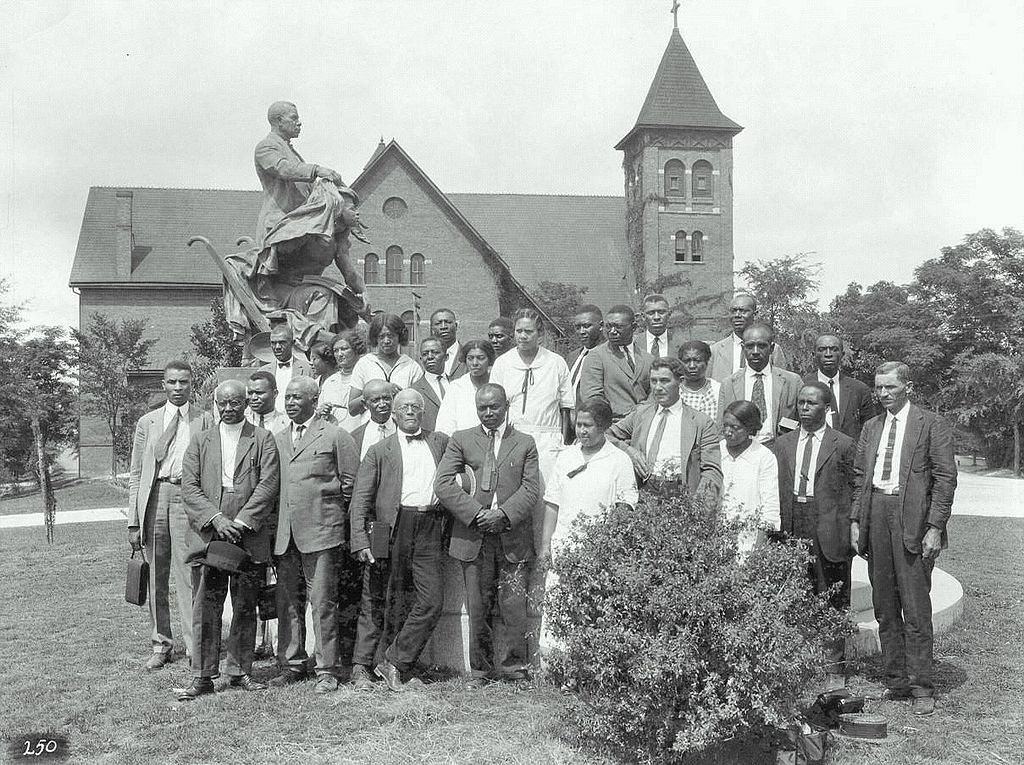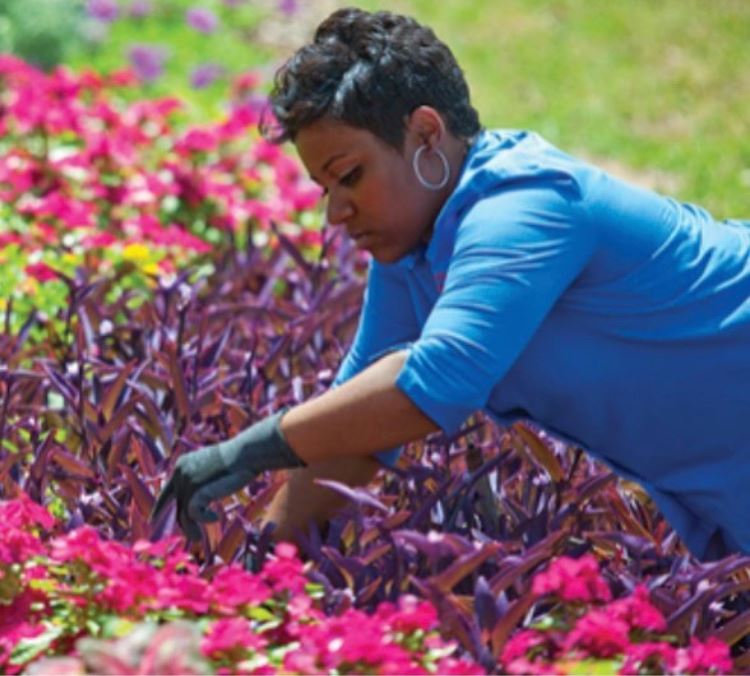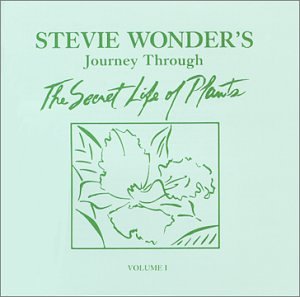Mother Nature is diverse, inclusive, and accessible. It’s only when human beings get involved that we put up barriers due to systemic racism. It’s important to us at Good Earth Plant Company to use our platform to celebrate the contributions of Black Americans to horticulture and gardening during Black History Month 2021.
Here are some of our favorite resources for you to explore this topic with us, and we know you’ll be inspired as much as we are.

Black farm and home demonstration agents pose for a photograph under the Booker T. Washington monument at Tuskegee Institute in 1925. Photo: Wikipedia
Black agriculture pioneers: Most people know the name George Washington Carver. Dr. Carver was an agricultural scientist at Tuskegee University in Alabama. By the time of his death in 1943 he was the single most important Black scientist of the 20th Century.
Dr. Carver studied the nitrogen cycle in soil and developed modern crop rotation techniques. If you compost, you can thank Dr. Carver for promoting this practice to reintroduce nutrients and organic matter into soil. He made composting common in organic farming and gardening today.
Another Tuskegee University professor, Dr. Booker T. Whatley, continued Dr. Carver’s work, and developed efficient farming practices for small farmers still in use today. He also promoted community supported agriculture in the 1960s and 1970s, which encouraged community food gardens in urban areas today.
Here’s something we take for granted: refrigerated trucks were invented by Frederick McKinley Jones, a Black investor who patented his system in 1940 and became the co-owner of the company Thermo-Kings. Because of his invention, fresh produce, flowers, and plants could be shipped all across the U.S. and enjoyed all year.
H/T to FarmProject.org – check it out for more information.
Marie Clark Taylor became the first African-American woman to earn a PhD in botany in 1941, and the first woman to earn a science doctorate from Fordham University. She researched the influence of light on plant growth and spent 30-years as the chairwoman of the botany department at Howard University.

Abra Lee. Courtesy: Cultivating Place/Facebook
Horticulturalist and writer Abra Lee is one of the most accomplished Black women in public horticulture today. She is the former landscape manager at the Hartsfield Jackson Airport in Atlanta, a member of the fellow program at one of my favorite places, the amazing Longwood Gardens in Pennsylvania, and she now lectures and writes about horticulture. Listen to an interview with Abra Lee on the “Cultivating Place” podcast (and you’ll want to subscribe).
A few years ago, I explored the concept of “guerilla gardening” and seed bombs (we wrote about it). Through it, I found and began communicating with Ron Finley of Los Angeles, the “Gangster Gardener.” Ron’s mission is to transform communities with food deserts with guerilla food gardens everywhere and anywhere. He started with one hellstrip of dead grass in South Central Los Angeles – and now he’s just recorded two MasterClasses on gardening and has a book coming out. Nine million people have already watched the trailer!
Watch Ron’s TED Talk from a few years ago, and you’ll see why he makes you believe in the magic of plants.
Only one percent of all landscape architects in the U.S. today are Black. The New York chapter of the American Society of Landscape Architects (ASLA-NY) hosts an online Black Landscape Speaker Symposium speaker series open to the public starting tonight and every Thursday in February highlighting contributions of Black-identifying landscape architects. Register and participate here.
African-American gardens in the U.S.: Many famous historic gardens and notable newly created gardens owe their existence to African-Americans.
Monticello: Thomas Jefferson’s gardens at his historic home owe a lot to Wormley Hughes, the African American often called Monticello’s “Head Gardener.” Hughes collected seeds, cultivated many plants in the Monticello nurseries, and set out Jefferson’s favorite trees. Learn more about Hughes and the gardens on the Monticello website.

The African American Cultural Garden in Cleveland. Photo: Facebook
Cleveland Cultural Gardens: A new African American Garden is being dedicated within the larger property. Mayor Frank G. Jackson organized a task force of business and community leaders who defined the garden’s mission: promoting education and interest in African American culture and heritage and a spirit of friendship among all people. Prominent Black architect W. Daniel Bickerstaff, AIA, NOMA, NCARB of Ubiquitous Design created the garden design to represent the past, present, and future of the African American community. It is still raising funds for its final phase.
Books by Gardeners of Color
The Arboretum Foundation put together this list of books and we are happy to share these reviews with you.
Even more resources:
Big Green: This nonprofit organization encourages the creation of learning gardens in schools including diverse communities.

One last item just for fun. In 1979, musician Stevie Wonder composed the soundtrack for the documentary film “The Secret Life of Plants.” The film itself is nearly impossible to find anymore, but the album is available for streaming via Amazon Music. In an interview many years later in Billboard Magazine, Wonder said he had the film’s producer describe the visual images to him in detail to help him create the music. “(It) was an experimental project with me scoring and doing other things I like: challenging myself with all the things that entered my mind from the Venus’s Flytrap to Earth’s creation to coming back as a flower,” he said.
Mother Nature is all about diversity and color, and we can never go wrong taking our guidance from her. We can barely scratch the surface of the many wonderful resources available to help you learn more. February isn’t long enough, so we hope you’ll keep learning more all year long.
